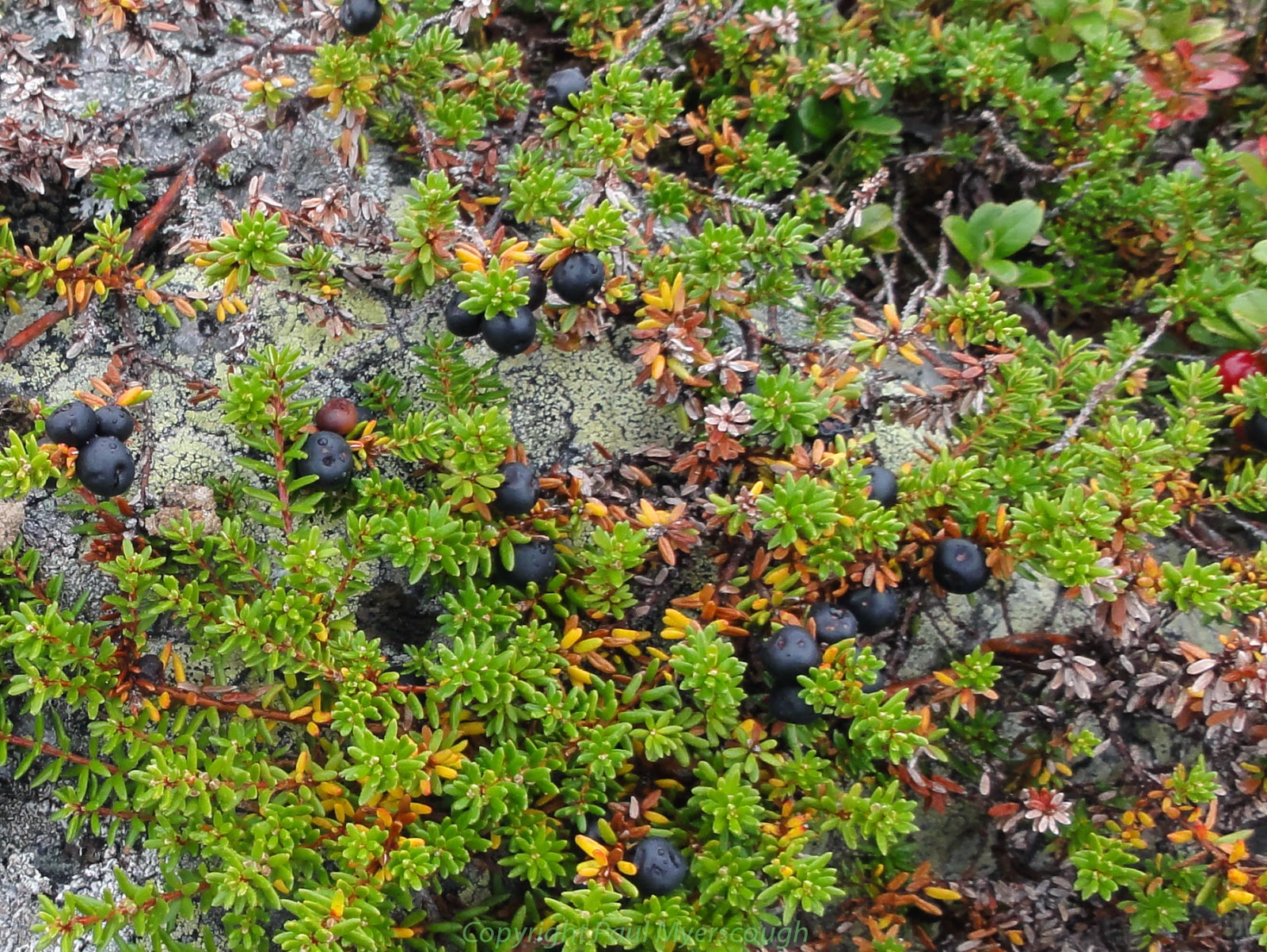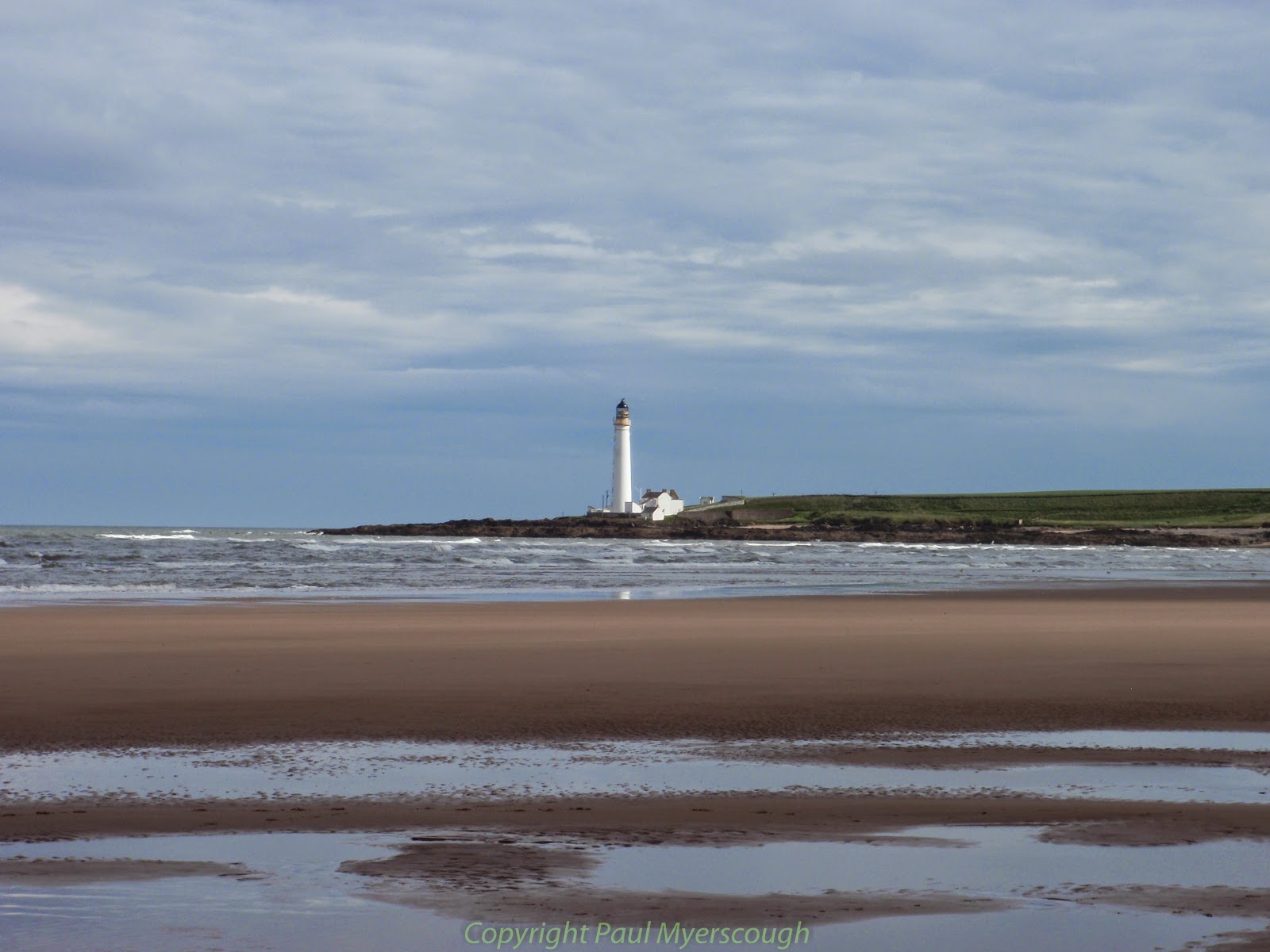I left Tony and Jackie tucked up in their tent and worked my way across to
the track up White Hill on the other side of the valley.
 |
| Birse Castle and Ballochan from White Hill |
From now on the mountains are behind me. I move eastwards trying to keep to
the relatively high ground of the hills and moorland as far as Fetteresso
Forest.
This is shooting country and land rover tracks reach much of the high ground.
Moving from one area to another may require a pathless tramp over a valley which
borders land belonging to two different owners. On the high resolution OS map it
mentions 'grouse butts' in many places. These are lines of shooting stations
built on the hill side.
 |
| a grouse butt |
 |
| Pathless tramp from one landholding to another |
The ridge heading east from Mount Battock provides an easy route with a
distinctive rock pile as a target at Clachnaben above Glen Dye. Here are many
day walkers enjoying the spring sunshine.
 |
| Clachnaben at the end of the ridge |
The green of grass in the Dye valley
and the wooded areas ahead contrasts attractively with the barren grouse moors,
and the windmills looking over this scene from the far side look like something
from Doctor Who.
 |
| Beautiful Glen Dye from Clachnaben overlooked by windmills (click to zoom in) |
 |
| path down to Glen Dye |
The map shows a footbridge across the Dye just below Heatheryhaugh. Described
by many as a 'locked bridge' I am keen to investigate. In fact it is a basket on
a wire which goes high over the river and, as many writers have noted, it is
padlocked to prevent use. Strangely there is no obvious path on either side of
the river so even the key holder may not use it.
 |
| locked 'footbridge' over the Dye |
I was ready to turn back and use the road bridge, but the river was low and I
found I could wade across just a few meters downstream.
 |
| Dye is fordable |
The spooky windmills visible earlier but now out of sight form part of the
plantation of Dennytys at the western edge of Fetteresso Forest. Heading this
way, beyond the farmstead of Heatheryhaugh the path works its way upwards and
into an enclosure. A narrow path (therefore most pleasant) traverses around the
contours of Little Kerloch before hauling up to the last high spot of Kerloch
itself at 534m. From this vantage point the full extent of the wind farm is
evident stretching eastwards with miniature figures of workers and their
vehicles dotting the access roads.
 |
| Dennystys Plantation |
My camping spot was well planned – a narrow green strip on the map
between the trees with a stream. I expected an easy walk around tracks shown on
the map, but on the ground navigation for this last 2km was difficult and I
reach for both compass and GPS for help.
 |
| Camping in Fetteresso Forest |
Eventually I found my spot, only with a tent already parked there! Tiny and
closed up tight with walking poles tucked neatly in to the side, it felt strange
to put my trailstar on the same bit of ground, and also strange to be surprised to
find someone else here. Flattened grass on the other side of the stream
indicated that others had used this location in the last few days and I settled
there.
Half an hour later a cheery Martin Bamfield announced himself. It was his
small tent. He had closed it up in order to get on with a bit of admin, and blog
writing over he was ready for some conversation. His plan was to leave early,
'very early', so he could reach Stonehaven by midday, and as he needed to get to
the Pyrennes for a walk that weekend. I expected to see him as I woke before
5am, but he had already gone – I learned later he had left at 4:15am.
By morning there were two other tents there, apparently Bernie Clark and
Stefan, I set off before there was signs of life from these two.
 |
| Large scale development requires large access roads! |
 |
| Footpaths seem to have got lost in the development |
Fetteresso is notable for the large scale works over the last year or two,
and there is a network of wide and well made access roads to match. Walking here
between 7 and 8 in the morning there is a intermittent stream of traffic
traveling in the opposite direction – all following the protocol of driving at
20mph with emergency light flashing. It may be possible to find footpaths, but
the signs I saw were often blocked by the road workings and seemed not to lie on
a path and indicated places not shown on my map. Using my OS map I managed to
navigate the access tracks to the eastern edge of the forest. I emerged by a car park at a place shown on the map as Swanley.
Here is an
example of one of the frustrations of OS mapping: what is a path? In OS 1:50000
a path is shown as a dashed black line; in OS 1:25000 a dashed black line is a
border of some sort, whereas the path is more like a green, brown, or black
dotted line. If you look at the 1:50000 map there is a path leaving the forest
eastwards and crossing open ground to a farm called Blairs. Now zoom-in to
1:25000 – the path has disappeared, but maybe there is a road or track not
shown on the other map which heads south from the car park parallel to the
electricity pylons before heading east to another farm called Hindwells. How was
it on the ground? Well there was no obvious path or track, although both may
have existed and become overgrown.
Having a large pack and with bad weather forecast I was not going to spend
time to investigate.
The tramp around the road was only about 1km anyway, and
brought me nearer to Fetteresso Castle. In a field just to the east of the
building is possibly the oldest intact dove cote in the country.
 |
| 14/15th century dovecote |
|
 |
| dovecote interior |
|
 |
| dovecote rear view |
|
This was probably built in the 14th or 15th century, and as I stuck my head in the
entrance a couple of blackbirds escaped. The picture shows the concept with
tiered bays inside, row after row in which a bird can roost.
Heading towards the bottom
of the field I found the bridge shown on the map – a steel structure looking
unused and unsafe and with an uncertain destination.
 |
| Footbridge near Fetteresso Castle |
I followed the stream
Carron Water for quite a way until I found somewhere I could cross while keeping
my boots on. Then by backtracking a little on the railway embankment I crossed
over a little used bridge.
 |
| Railbridge near Fetteresso Castle |
As it started to rain I look back northwards across to the road where I could
make out three shapes with backpacks marching eastwards. I was not alone!
 |
| The Hardy Gang on the Match! (click to zoom in) |
The final two or three kilometers are inevitably on road, and it is a relief
to reach the car park for Dunnottar Castle. Here a bearded anorak announces
himself as an ex-TGOer waiting for the Hardy Gang. I'd already heard they had
'plan' including beer and a lift for their arrival at the east coast, so I was
happy to let the man know that I'd seen them not far behind.
 |
| Dunnottar Beach |
|
 |
| Dunnottar Castle |
|
Reaching the beach was the end of my crossing. All I needed now was some
sunshine to let me dry out and enjoy the feeling of arrival. Unfortunately my
need was left unmet. The Hardy Gang arrived as I left for the 2–3 km walk to
Stonehaven getting colder and wetter.
 |
| The Hardy Boys |
Stonehaven has an 'award winning' fish and chip shop; there's also some
attractive Inns overlooking the harbour. With wet-through clothes and pack,
however, it is uncomfortable everywhere. I decided to go for the fish and chips
and walked in from the harbour only to find that the award winner was the 'home
of the deep-fried Mars Bar'. There was no restaurant. Eventually I
found somewhere else where I could recover my spirits with some food before
finding the bus that would take me to Montrose.
 |
| Stonehaven Harbour |
For all the pictures look here:-
























































